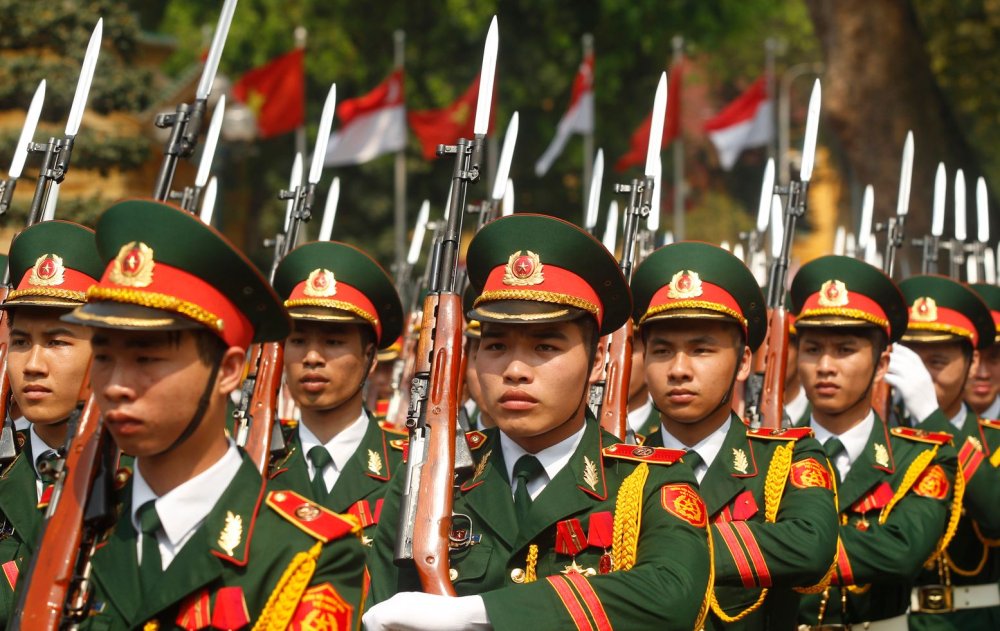by Charlie Gao
Chinese operations against Vietnam in the 1980s are often divided into four phases. In the first, the Chinese and Vietnamese further entrenched their positions along the border. This lasted until 1981. The second and third phase consisted of escalating offensive operations across the border from 1981 to 1987, gradually increasing in intensity. The last phase involved the PLA’s withdrawal from the border region. The political objectives of the Chinese incursions were to “punish” Vietnam for its continued belligerence towards Thailand and Cambodia. Since Vietnamese troops were going into Cambodia, Chinese troops would continue to do the same. Militarily, China saw the border conflict as a way to evolve the PLA from an antiquated fighting force to a modern one, by testing new doctrines and equipment on the border.
The PLA’s performance in the 1979 war was so bad, even Vietnamese commanders were surprised, according to some sources. This was a result of its reliance on Korean War–style infantry assault tactics, due to the operational inflexibility and stagnation of military thought in the PLA. The layout of the command structure, and the infrastructure that supported it, could not support maneuver warfare by smaller units of higher-quality forces.
Following the 1979 war, many reforms and reorganizations occurred within the PLA. Old leadership was removed, and a fresh set of new officers was brought in. Finally, in 1984 the situation presented itself for a test of these reforms. Late in 1983, Deng Xiaoping met with Prince Norodom Sihanouk of Cambodia. The prince wanted help, as Vietnamese soldiers were making significant gains inside of Cambodia. As a result, Deng decided to mobilize the PLA for a significant offensive operation in 1984. The offensive’s objectives were to capture the areas of Laoshan and Zheyinshan. After preparatory barrages throughout most of April 1984, the ground offensive was finally launched on April 28. Five infantry regiments assaulted hilltop positions around Laoshan, taking them one by one. This was not a total success story, as these regiments took heavy casualties and used inflexible tactics similar to 1979. The two regiments assigned to assault Zheyinshan fared better. Flexible command allowed the attacks to be postponed until the opportune time, and the attack was a great success, with all Vietnamese positions being captured. The divisional commander in charge of those regiments was soon promoted to command the Eleventh Army, and the attack was cited as a textbook example of what the PLA could now accomplish.
The Vietnamese launched counterattacks in the MD-84 Campaign in an attempt to reclaim the positions they lost in the Laoshan offensive. Counterattacks occurred against the Chinese positions at Laoshan throughout June and July. After-action reports from these offensives suggest that Chinese military modernization proved to be a possible reason for success. Vietnamese veterans recalled being shelled by Chinese artillery even at nighttime, due to the deployment of new Chinese night-vision devices to the frontline. In addition, Chinese logistics achieved new levels of efficiency. One Chinese artillery commander remarked that in repelling the counterattacks, he could execute as many fire missions as he wished without worrying about ammunition supply for the first time in his career.
J. C. Penney opens store #1252 in Milford, Delaware, making it a nationwide company with stores in 48 U.S. states.
Television: CBS's mechanical color system is the first to be licensed for broadcast by the U.S. Federal Communications Commission.
Operations in the Laoshan sector also were the catalyst for the development of greater direct-action capability among the PLA’s reconnaissance units. After a Vietnamese Dac Cong commando unit destroyed a PLA counterbattery radar in 1984, Deng Xiaoping asked the PLA General Staff to create similar capabilities. All Chinese military regions were ordered to organize reconnaissance brigades, which were then rotated throughout the Laoshan sector. Fifteen reconnaissance brigades were created, three to five of which were deployed to the sector at any given time. These brigades were very active in raiding rear areas, and experience gained by them was later used by the PLA to help create their own special-operations forces.
Overall, while the Sino-Vietnamese border wars might have seemed insignificant, they proved to be an effective testing ground for the PLA’s reforms. Trials by fire in the Laoshan sector allowed the PLA to grow a new cadre of forward-thinking leadership. New technologies and organizational structures were also trialed and reformed, and combat experience was gained that lead to the creation of Chinese SOF. In one Chinese general’s words, the border conflict “allowed him to achieve his dream of waging modern war by modern methods.” The Sino-Vietnamese border conflict of 1979 to 1990 can be seen as the crucible in which the modern PLA was born, reformed from the lumbering army that attacked Vietnam in 1979.
The author was informed by Chinese Military Strategy in the Third Indochina War by Edward C. Dowd and Deng Xiaoping’s Long War: The Military Conflict between China and Vietnam 1979–1991 by Xiaoming Zhang.

No comments:
Post a Comment